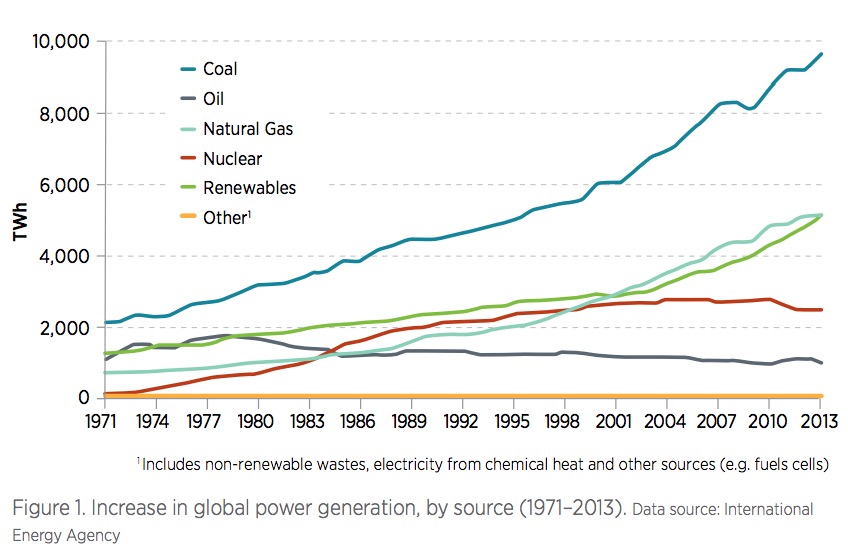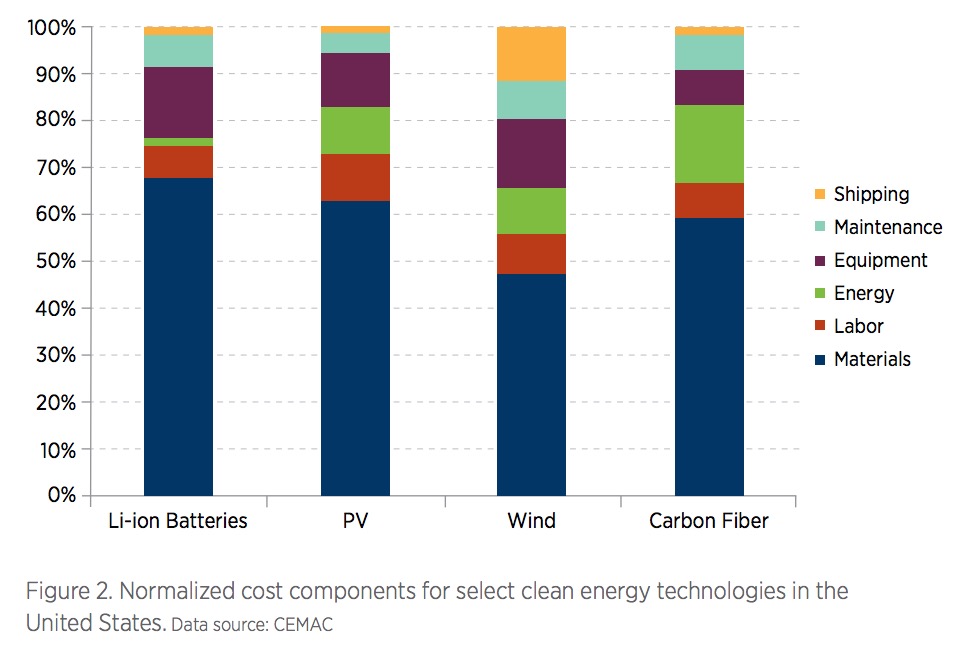CLEAN ENERGY MANUFACTURING ANALYSIS CENTER
Importance of Clean Energy Manufacturing Analysis
Global primary energy demand is likely to grow by more than 30% over the next 20 years, with much of the increased demand driven by emerging markets (Citi GPS 2015; REN21 2015; IEA 2015). Much of that demand is likely to be met with clean energy resources. Globally, annual investment in clean energy is approximately $300B and anticipated to grow from that level for many decades.
Meeting Growing Energy Demand with Clean Energy Technologies
 CEMAC defines clean energy technologies as those that produce or deliver energy or energy services with fewer environmental impacts than conventional technologies, or enable existing technologies to operate more efficiently.
CEMAC defines clean energy technologies as those that produce or deliver energy or energy services with fewer environmental impacts than conventional technologies, or enable existing technologies to operate more efficiently.
Traditional fossil fuel sources like coal and oil remain in abundant supply but are facing increasing competition from cleaner energy technologies due to a convergence of technology innovations, ongoing concerns over energy security, environmental impacts associated with traditional energy use, and dramatic cost declines of renewable energy. Many of these factors are pushing even traditional fossil-based generation to adopt efficiency and technology innovations that reduce the total system impact. With the historic Conference of Parties (COP21) agreement in Paris in late 2015, countries around the world, both developing and developed, made national commitments to cleaner power that could accelerate trends toward decarbonization.
In 2015, CEMAC focused on four technologies: solar photovoltaic modules, wind turbines, automotive lithium-ion batteries, and carbon fiber. The studies on these technologies are summarized in the following section. During these more detailed analyses of our inaugural year, we gained preliminary insights into clean energy manufacturing overall; specifically related to its adaptation to global economic dynamics and the factors influencing the location of manufacturing facilities in a global world.
Insight: Clean energy manufacturing is entering a new era—one that reflects the legacy of the past as well as new global dynamics.
The influences of these drivers, combined with finance and business model innovations, are driving the growth of clean energy technologies, opening the market to new producer and consumer segments globally (Stark et al. 2015). The 21st Century Power Partnership, a Clean Energy Ministerial initiative, lists innovations in business models and entrepreneurship, policy making, planning processes, operational practices, finance, regulation, and stakeholder engagement among additional forces helping drive the transformation to cleaner power systems (Miller et al. 2015).
Between 2004 and 2014, U.S. Energy Department data show that tumbling prices coincided with dramatic U.S. uptake across a range of technologies, including land-based wind, solar photovoltaic modules, electric vehicles, and A-type LED lighting. In some cases, expansion approached 100-fold, and cost reductions were on the magnitude of 50%–90% (DOE 2015). In a similar timeframe, renewables and cleaner technologies like natural gas captured larger shares of global power plant markets (Figure 1). Through 2040, levelized costs of wind and solar energy are expected to continue to fall while the costs of coal and gas remain stable (Citi GPS 2015).
Because many clean energy technologies, such as renewables and efficiency, do not require fuel for operations, the location and cost of the technology manufacturing and supporting operating costs become a larger factor in their contribution to the economy. Clean energy manufacturing analysis helps illuminate how and where the growing demand for clean energy technologies will likely be met.
Credible, objective, and geographically neutral data and insights can help governments and industries harness the opportunity provided by these market trends to inform investment strategies, policy, and other decisions to promote economic growth and competitiveness in the transition to a clean energy economy.
 Insight: Multiple factors guide corporate strategy regarding factory location (Text Box 1), as CEMAC research has shown. These factors include indigenous factors (e.g., low labor costs, energy costs, resource availability), policy differences (e.g., taxes, tax incentives, interest rates, low-interest loans), existing infrastructure (e.g., transportation), existing supply chains, synergistic industries, and market characteristics (location, growth rate, competing products). Evaluating technologies at the research, development, demonstration, and deployment stages within the context of these factors can help to identify opportunities to target areas of high value-add manufacturing along the supply chain, and inform product and market strategies.
Insight: Multiple factors guide corporate strategy regarding factory location (Text Box 1), as CEMAC research has shown. These factors include indigenous factors (e.g., low labor costs, energy costs, resource availability), policy differences (e.g., taxes, tax incentives, interest rates, low-interest loans), existing infrastructure (e.g., transportation), existing supply chains, synergistic industries, and market characteristics (location, growth rate, competing products). Evaluating technologies at the research, development, demonstration, and deployment stages within the context of these factors can help to identify opportunities to target areas of high value-add manufacturing along the supply chain, and inform product and market strategies.
In the 1990s and 2000s, a trend toward locating manufacturing facilities overseas was largely driven by a desire to reduce costs by securing low-cost manufacturing labor (da Silveira 2014; Immelt 2012; Tate et al 2014; Booth 2013). For some manufacturers, low-cost labor continues to strongly influence location decisions. For others, labor savings may not justify costs associated with longer supply chains, transportation, and quality control. Figure 2 shows that for a range of clean energy technologies manufactured in the United States (and discussed in detail in this report), labor costs are a roughly equal share of normalized costs. However, the normalized cost of shipping, equipment, energy, and materials can vary greatly.
These are the types of insights that robust clean energy manufacturing analysis can provide. As we expand our technology analysis portfolio in future years, we can continue to inform and elevate the discussion of key factors related to the manufacture of clean energy technologies.
Download full version (PDF): 2015 Research Highlights
About the Clean Energy Manufacturing Analysis Center (CEMAC)
www.manufacturingcleanenergy.org
The U.S. Department of Energy’s (DOE’s) Clean Energy Manufacturing Analysis Center (CEMAC) provides objective analysis and up-to-date data on global supply chains and manufacturing of clean energy technologies. Policymakers and industry leaders seek CEMAC insights to inform choices to promote economic growth and the transition to a clean energy economy.
Tags: CEMAC, Clean Energy, Clean Energy Manufacturing Analysis Center, DOE, National Renewable Energy Laboratory, NREL, Renewables, U.S. Department of Energy






 RSS Feed
RSS Feed